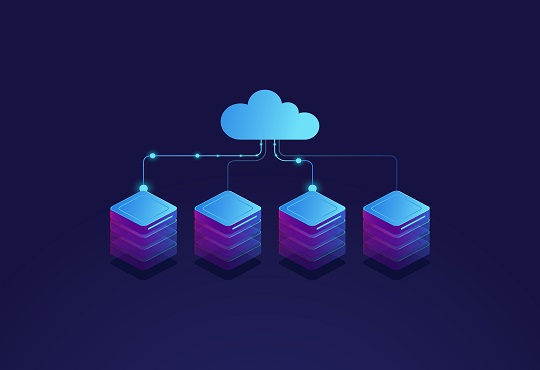Function-as-a-Service (FaaS): The Future of Serverless Computing
Rejith P R, Correspondent, CIOTechOutlook | Saturday, 27 April 2024, 09:24 IST
 Cola-Cola has developed a serverless solution for releasing nutrition details to their food service associates using Lambda, Step Functions, and API Gateway. To build serverless applications rapidly, their development team has formed an internal CI/CD reference architecture that builds on the serverless application system. The consumption-based pricing strategy provided the organization with direct control over its expenses as well as complete transparency into its usage data.
Cola-Cola has developed a serverless solution for releasing nutrition details to their food service associates using Lambda, Step Functions, and API Gateway. To build serverless applications rapidly, their development team has formed an internal CI/CD reference architecture that builds on the serverless application system. The consumption-based pricing strategy provided the organization with direct control over its expenses as well as complete transparency into its usage data.
The Function As A Service Market size is valued at USD 17.70 billion in 2024, and is anticipated to touch USD 44.71 billion by 2029, growing at a very impressive compound annual growth rate of 20.36% during the forecast period.
Over the years serverless computing has grown as a groundbreaker of cloud innovations. Function-as-a-Service (FaaS) stands as the bedrock of this transformation, providing a creative approach that commits flexibility and cost-effectiveness.
Auto-scaling
Technology makes life easier; similarly, applications have become paramount in this tech era to bring multiple activities to your fingertips. The number of users will increase during peak times and need something to streamline the application, and this is where auto-scaling will come into play, which is one of the key benefits of Function-as-a-Service (FaaS) transforming serverless computing. The instructions are programmed in such a way that quick responses occur during peak loads and automatically reduce costs when there is less activity. More importantly, this particular benefit is helping the organization retain users and eliminate capacity planning, delivering unmatched flexibility for developers. Hence, organizations must leverage this feature to unleash the maximum benefits from it.
For instance, Amazon Web Services, which plays a significant role in cloud computing, utilizes Function-as-a-Service for several services. Their AWS Lambda enables users to run code in reaction to events without managing servers, and by harnessing auto-scaling with FaaS, firms seamlessly handle resources, contributing to high resource utilization.
Pay-per-use pricing
In this dynamic technology landscape, pay-per-use pricing is an important breakthrough in service-based pricing. With this pricing model, organizations can deal with the execution of the amount that has to be paid when it is only utilized and get rid of upfront investments in infrastructure. More importantly, if the organization makes this a regular practice in their business requirements, it leads to several benefits, mainly in terms of cost savings, contributing to greater efficiency. Moreover, the other flexibility is that it is still an option to use it regularly, as it can also be leveraged when it is required, making this model a tactical one for the organizations associated with coding needs.
Spotify, a renowned digital music service provider, utilizes Google Cloud functions for several data processing activities, and the firm only pays for the time used by their functions, embracing a pay-per-use pricing model.
Developer productivity
Function-as-a-service (FaaS) makes development workflows seamless, making it a productivity revolution in serverless computing. From the developer's point of view, they can just concentrate on programming and deploying code, advancing the overall development cycle. FaaS also deals with expanding, implementing, and sustaining automatically so that the developers are free from tedious tasks. It is also associated with the event-driven architecture, which allows quick prototyping and iteration, enabling agile development methodologies. Since the deployment is streamlined and with less cost, the developer community can make necessary changes quickly, look into new features, and experiment, providing value to users at an unmatched speed. Finally, this productivity helps developers innovate quickly, driving the advancement of software development methodologies.
Uber makes use of Function-as-a-Service (FaaS) to improve developer productivity and simplify their operations. The firm also uses a dynamic pricing algorithm to adjust the fare amount according to supply and demand in real time. So, by leveraging FaaS, the firm's developers can easily deploy and make changes to functions, which are responsible for components.
Chander Sharma, Head IT, Accutest Research Laboratories said that "Serverless is about abstracting users away from servers, infrastructure, and having to deal with low-level configuration or the core operating system"
Fault tolerance and reliability
Fault tolerance and reliability are unavoidable parts of FaaS, and they have become the key strengths, transforming serverless computing. FaaS platforms play a vital role in spreading out the execution of functions across many servers, ensuring replication, and lowering the impact of server issues. FaaS technology dynamically adapts resources to meet needs with automatic scaling and load balancing, sustaining better performance under changing workloads. Moreover, context-free execution makes sure that functions become isolated, minimizing the risk of rippling failures. By generalizing framework frameworks and offering built-in redundancy systems, the FaaS technology improves framework resilience, allowing trust and robust applications. Overall, reliability nurtures trust among customers and simplifies the delivery of resilient services.
For example, Airbnb utilizes Function-as-a-Service (FaaS) to ensure fault tolerance and reliability in its reservation system. Relying on FaaS, the firms can streamline the reservation tasks into simpler and more independent functions.
In a nutshell, Function-as-a-Service has become a fundamental change in cloud computing, delivering matchless flexibility, expandability, and cost-effectiveness for implementing event-driven applications. Considering the present scenario of delays it takes for any function, FaaS has made remarkable accomplishments by enhancing developer productivity and user-friendly pricing models across several sectors. Undoubtedly, as Faas continues to grow, the technology will contribute to value creation in the future of serverless computing, assisting the developer community to develop innovation and make the task of scaling applications seamless. Hence, it is important that the organization adopt FaaS to experience a lot of favorable changes in their workplace.




